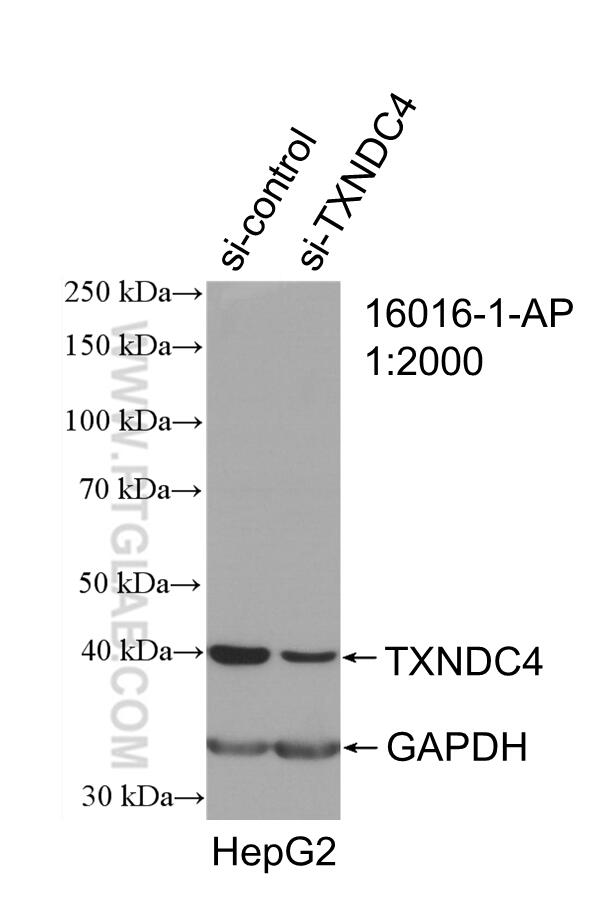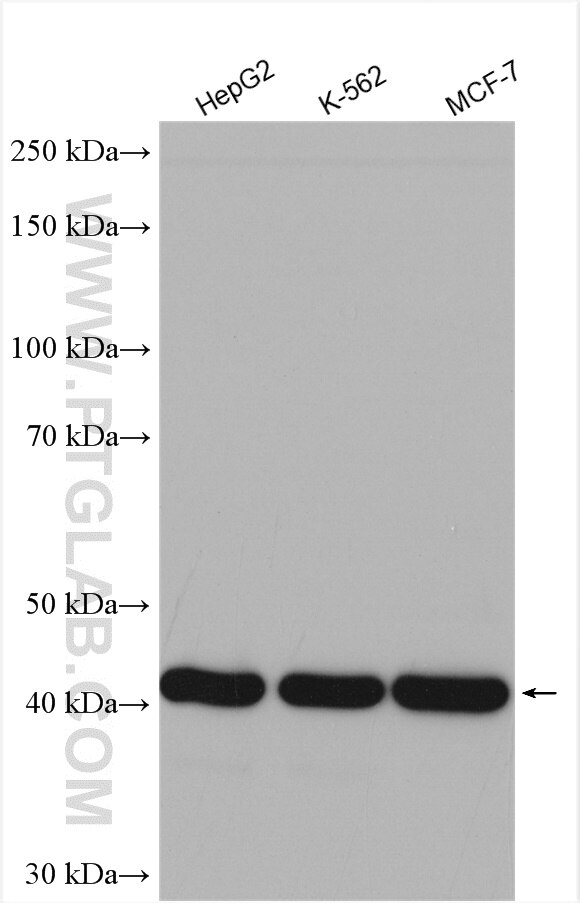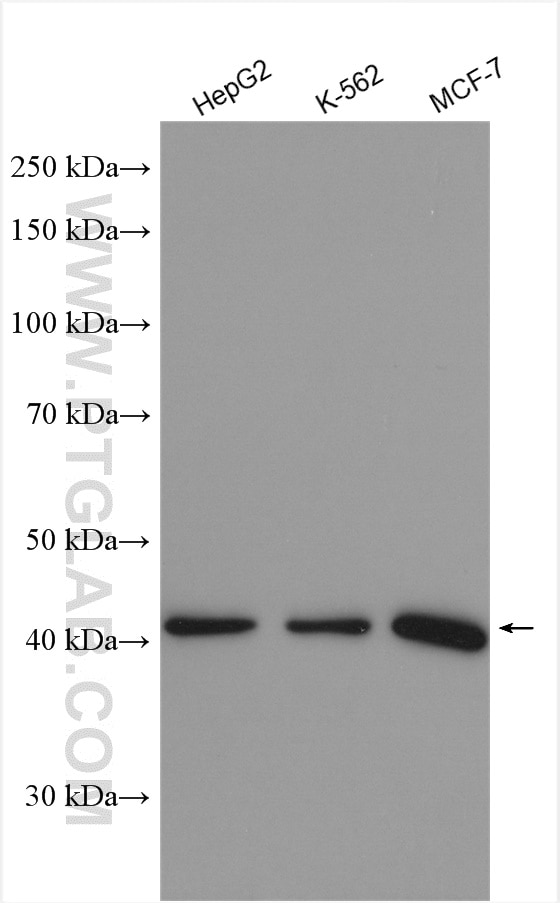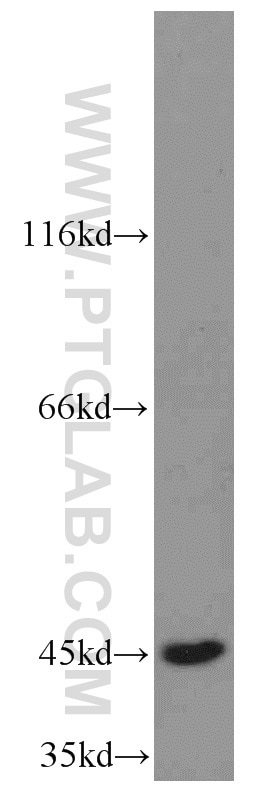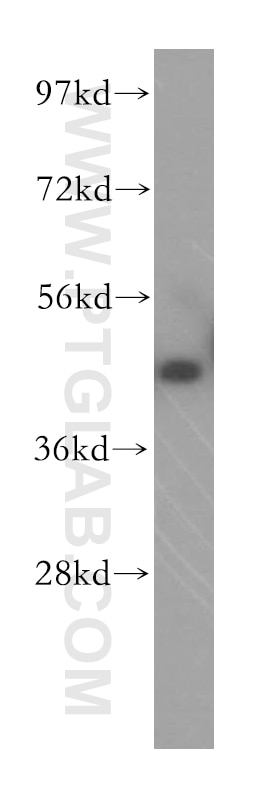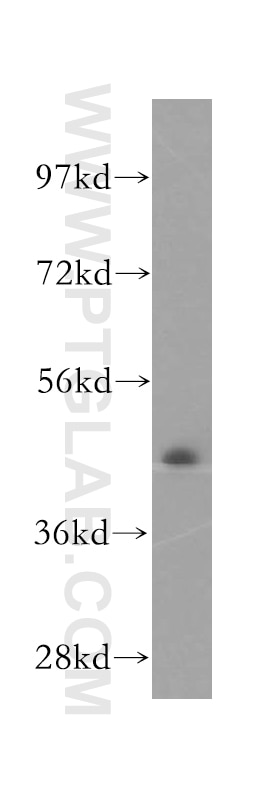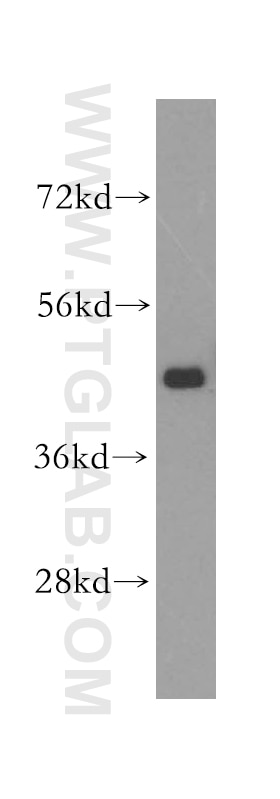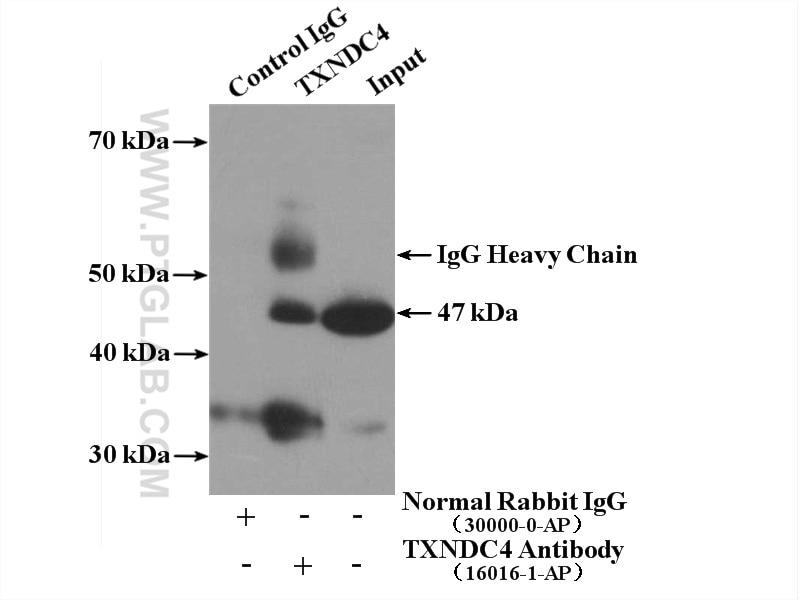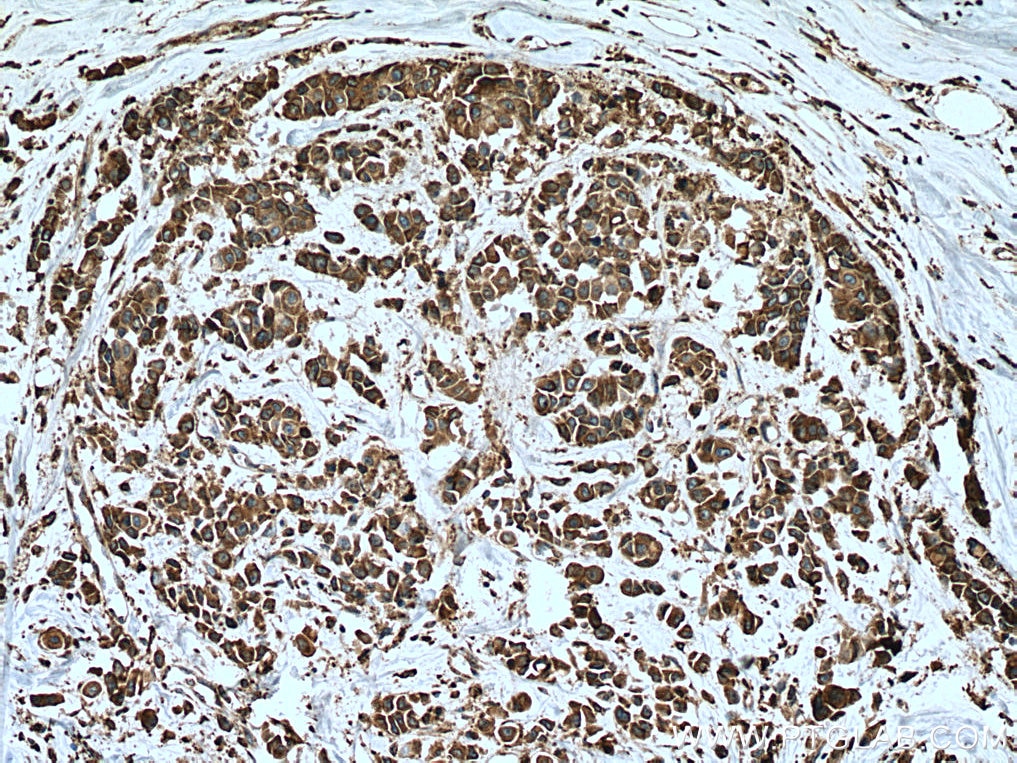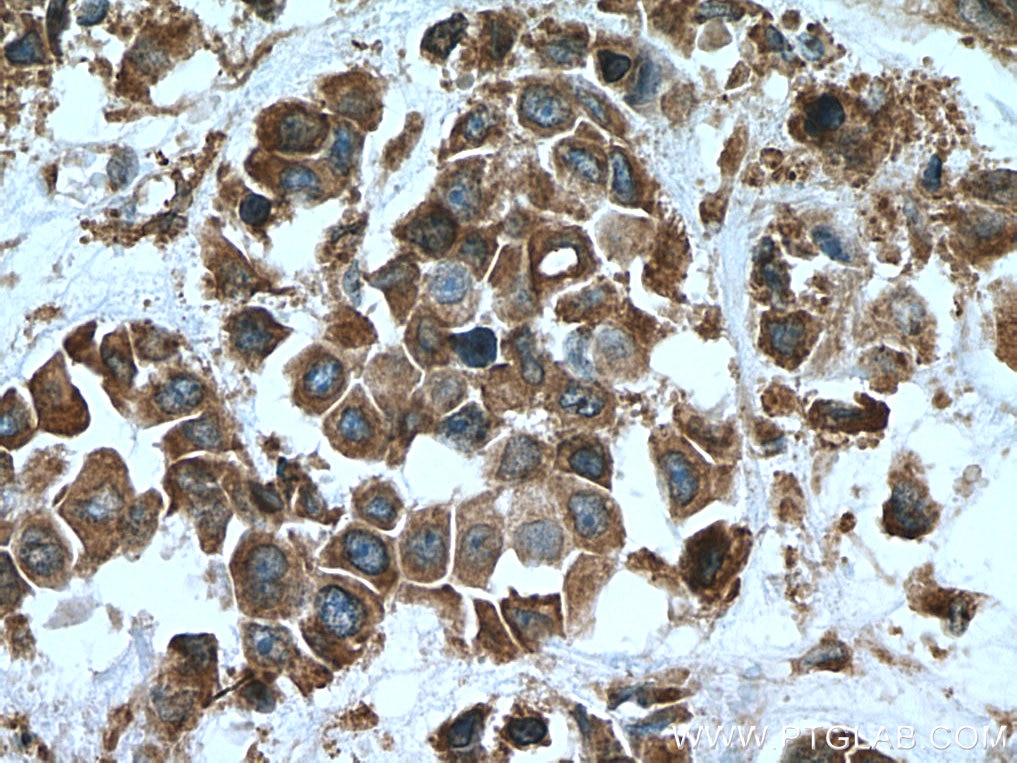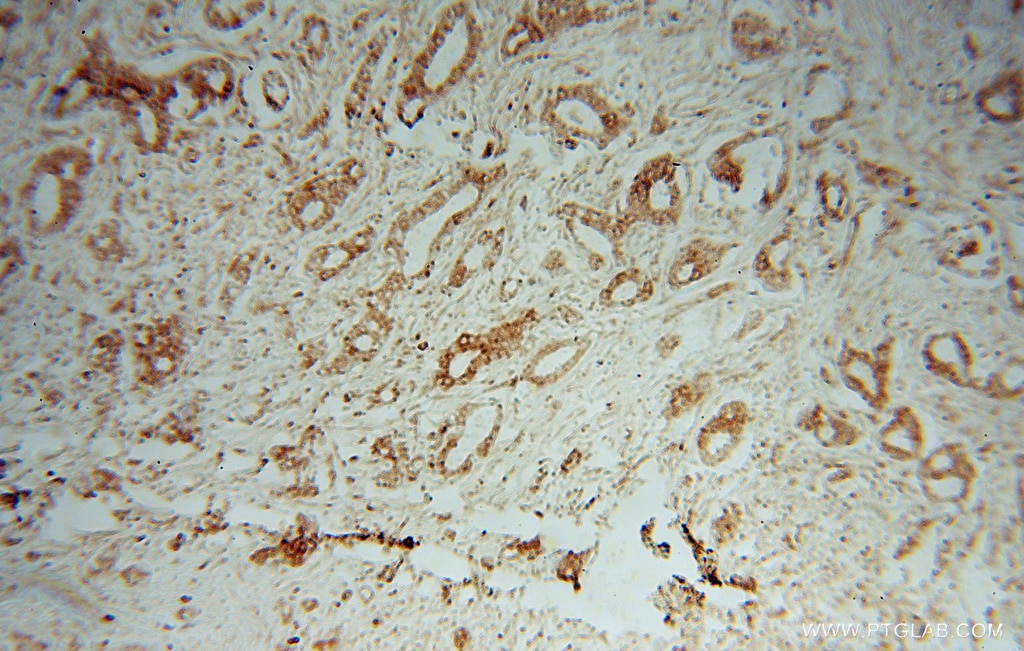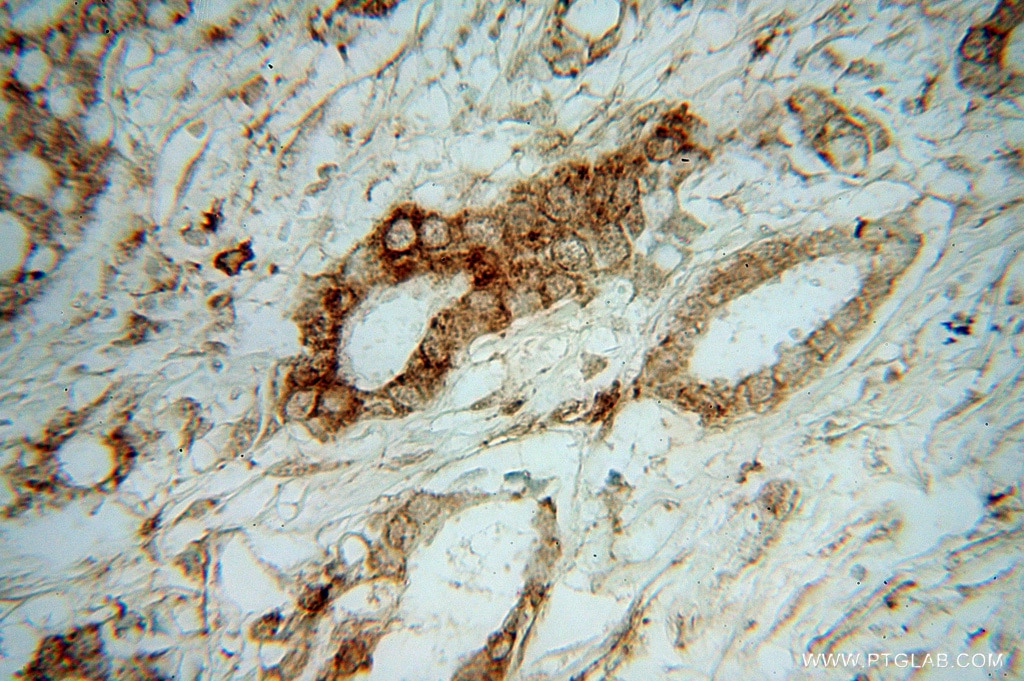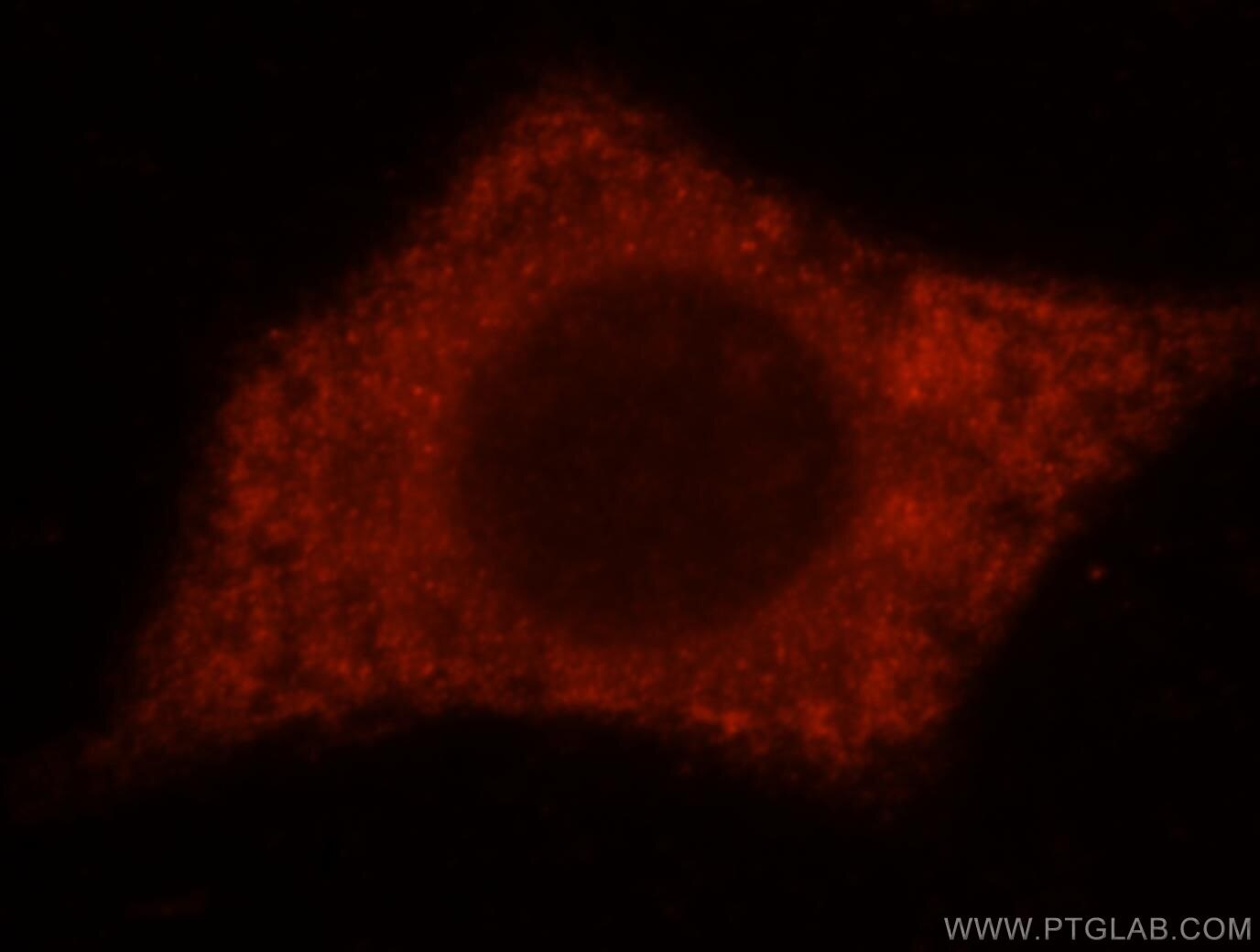- Phare
- Validé par KD/KO
Anticorps Polyclonal de lapin anti-TXNDC4
TXNDC4 Polyclonal Antibody for WB, IP, IF, IHC, ELISA
Hôte / Isotype
Lapin / IgG
Réactivité testée
Humain, souris
Applications
WB, IHC, IF/ICC, IP, CoIP, ELISA
Conjugaison
Non conjugué
N° de cat : 16016-1-AP
Synonymes
Galerie de données de validation
Applications testées
| Résultats positifs en WB | cellules HepG2, cellules HeLa, cellules K-562, cellules MCF-7 |
| Résultats positifs en IP | cellules K-562 |
| Résultats positifs en IHC | tissu de cancer du sein humain, il est suggéré de démasquer l'antigène avec un tampon de TE buffer pH 9.0; (*) À défaut, 'le démasquage de l'antigène peut être 'effectué avec un tampon citrate pH 6,0. |
| Résultats positifs en IF/ICC | cellules HeLa |
Dilution recommandée
| Application | Dilution |
|---|---|
| Western Blot (WB) | WB : 1:1000-1:6000 |
| Immunoprécipitation (IP) | IP : 0.5-4.0 ug for 1.0-3.0 mg of total protein lysate |
| Immunohistochimie (IHC) | IHC : 1:500-1:2000 |
| Immunofluorescence (IF)/ICC | IF/ICC : 1:10-1:100 |
| It is recommended that this reagent should be titrated in each testing system to obtain optimal results. | |
| Sample-dependent, check data in validation data gallery | |
Applications publiées
| KD/KO | See 1 publications below |
| WB | See 4 publications below |
| IHC | See 2 publications below |
| IF | See 2 publications below |
| CoIP | See 1 publications below |
Informations sur le produit
16016-1-AP cible TXNDC4 dans les applications de WB, IHC, IF/ICC, IP, CoIP, ELISA et montre une réactivité avec des échantillons Humain, souris
| Réactivité | Humain, souris |
| Réactivité citée | Humain, souris |
| Hôte / Isotype | Lapin / IgG |
| Clonalité | Polyclonal |
| Type | Anticorps |
| Immunogène | TXNDC4 Protéine recombinante Ag8818 |
| Nom complet | endoplasmic reticulum protein 44 |
| Masse moléculaire calculée | 406 aa, 47 kDa |
| Poids moléculaire observé | 44-47 kDa |
| Numéro d’acquisition GenBank | BC005374 |
| Symbole du gène | ERP44 |
| Identification du gène (NCBI) | 23071 |
| Conjugaison | Non conjugué |
| Forme | Liquide |
| Méthode de purification | Purification par affinité contre l'antigène |
| Tampon de stockage | PBS avec azoture de sodium à 0,02 % et glycérol à 50 % pH 7,3 |
| Conditions de stockage | Stocker à -20°C. Stable pendant un an après l'expédition. L'aliquotage n'est pas nécessaire pour le stockage à -20oC Les 20ul contiennent 0,1% de BSA. |
Informations générales
TXNDC4 is also named as KIAA0573, ERP44, PDIA10, ERp44 and belongs to the thioredoxin family (TRX). It may be involved in electron transport, protein folding, response to unfolded protein, glycoprotein metabolism, secretory pathway. It may have a role in the control of oxidative protein folding in the endoplasmic reticulum.
Protocole
| Product Specific Protocols | |
|---|---|
| WB protocol for TXNDC4 antibody 16016-1-AP | Download protocol |
| IHC protocol for TXNDC4 antibody 16016-1-AP | Download protocol |
| IF protocol for TXNDC4 antibody 16016-1-AP | Download protocol |
| IP protocol for TXNDC4 antibody 16016-1-AP | Download protocol |
| Standard Protocols | |
|---|---|
| Click here to view our Standard Protocols |
Publications
| Species | Application | Title |
|---|---|---|
Cell Metab Di-methylation of CD147-K234 Promotes the Progression of NSCLC by Enhancing Lactate Export. | ||
Antioxid Redox Signal Ero1α regulates Ca(2+) fluxes at the endoplasmic reticulum-mitochondria interface (MAM). | ||
J Transl Med ER resident protein 44 promotes malignant phenotype in nasopharyngeal carcinoma through the interaction with ATP citrate lyase.
| ||
Traffic Profound architectural and functional readjustments of the secretory pathway in decidualization of endometrial stromal cells. | ||
BMC Cancer Exosomal ERp44 derived from ER-stressed cells strengthens cisplatin resistance of nasopharyngeal carcinoma |
